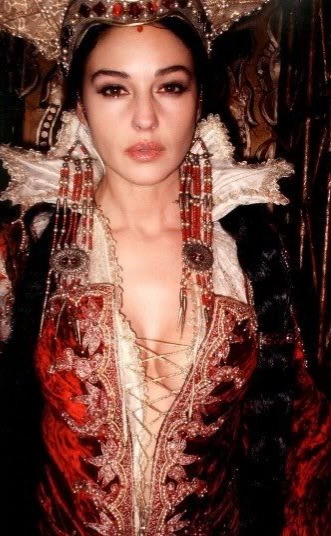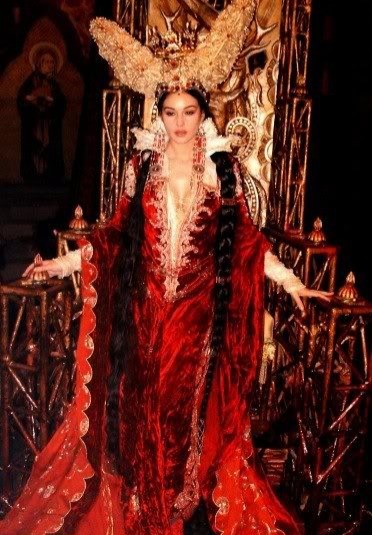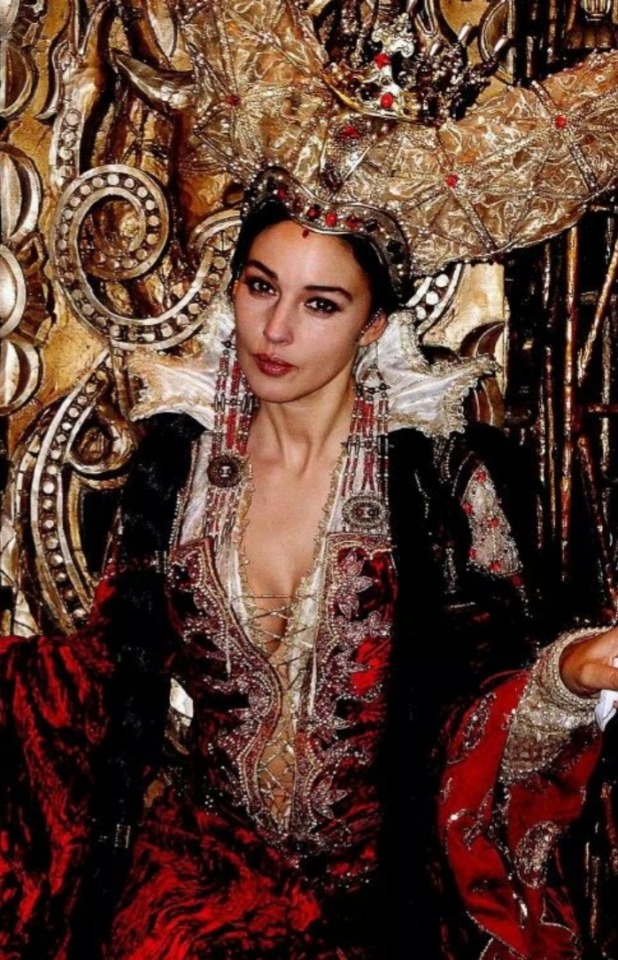#the brothers grimm
Text
WAIT WAIT WAIT

YOU'RE TELLING ME
THE TITLE CARD FROM CINDERELLA (1950) EXPLICITLY SAYS IT'S BASED ON THE PERRAULT VERSION OF THE STORY???
WE COULD HAVE AVOIDED ALL THE SANCTIMONIOUS EDGELORDS SMARMING ABOUT HOW "well Disney toned it down; the One True Grimms' Original akschully has blood and no fairy and feet getting cut up, so there" IF THEY HAD JUST
BOTHERED TO PAY ATTENTION TO THE MOVIE AND THEN GOOGLE "PERRAULT CINDERELLA???"
excuse me I need to go scream into a pillow
(I'm not saying Ashenputtel isn't possibly older as a folktale than its 1812 publication date in the Grimms' book, but Perrault's version was published in the 1690s. so...)
#fairytales#folktales#cinderella#disney#charles perrault#the brothers grimm#and if you're obsessed with originality. the earliest recorded version of the story is like a paragraph long and completely bloodless#'there was a lovely courtesan. an eagle carried one of her sandals to Pharaoh. he used it to find her and married her. The End."#(Rhodopis if you want to look it up)
2K notes
·
View notes
Text
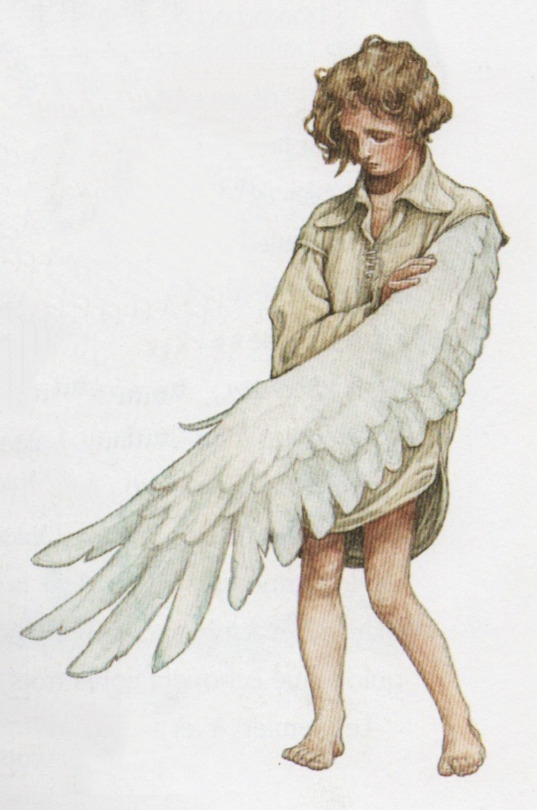
The Six Swans
Artist : Patrick James Lynch
#the six swans#les six cygnes#children's literature#fairy tale#children's books#fairy story#children's book#fairy tales#fairy#p. j. lynch#patrick james lynch#brothers grimm#the brothers grimm#les frères grimm#die sechs schwäne#german fairytales#german fairy tale#prince#wing#1993
866 notes
·
View notes
Text
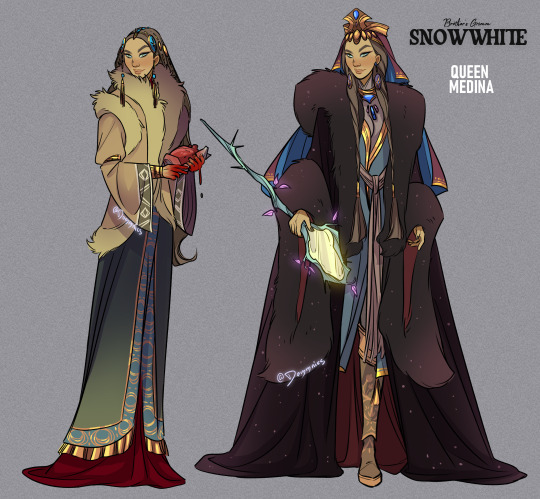
Here's my take on the wicked queen from the Brothers Grimm Snow White to accompany my Snow White design. It took forever to land on colours for the second outfit but I'm actually pretty happy with how these ended up. I gave her a hand mirror, just one out of many mirrors in her possession probably. I also gave her a name for my own headcanon of her.
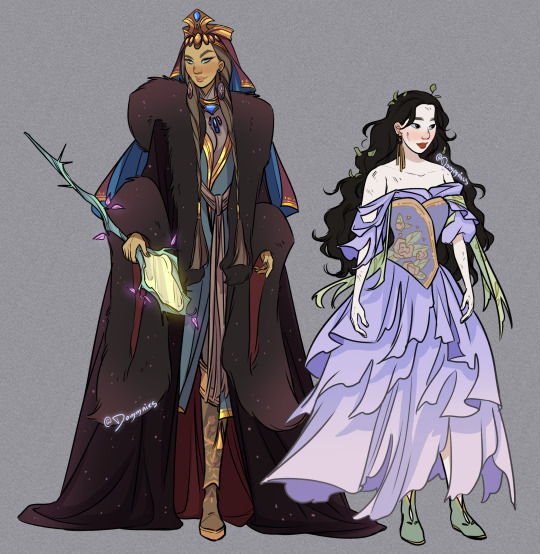
Here's the two together!
--
Check out more of my work on other platforms!
My Instagram -- My Twitter
#snow white#brothers grimm#fairy tales#fairytale#fairy tale#fairy tale art#fairy tale illustration#the brothers grimm#snow white and the seven dwarfs#princess#art#drawing#character design#redesign#dress#queen#evil queen#villains#wicked stepmother#grimms fairytales#literature#children's literature#fairy story#illustration#folklore#book art
294 notes
·
View notes
Text
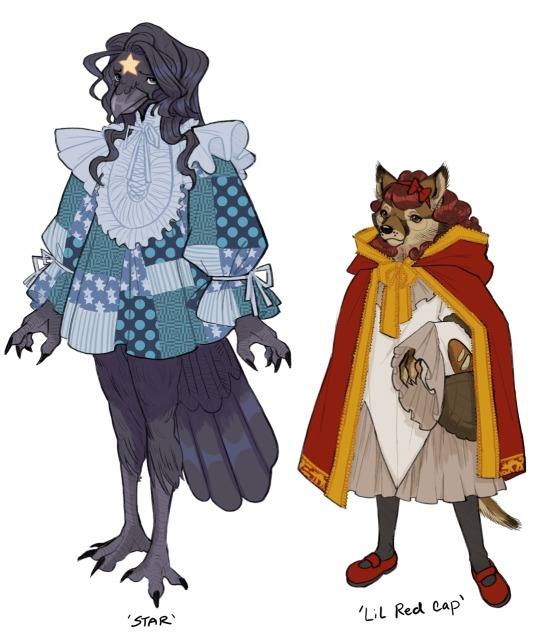
S'more fairytale based characters
140 notes
·
View notes
Text




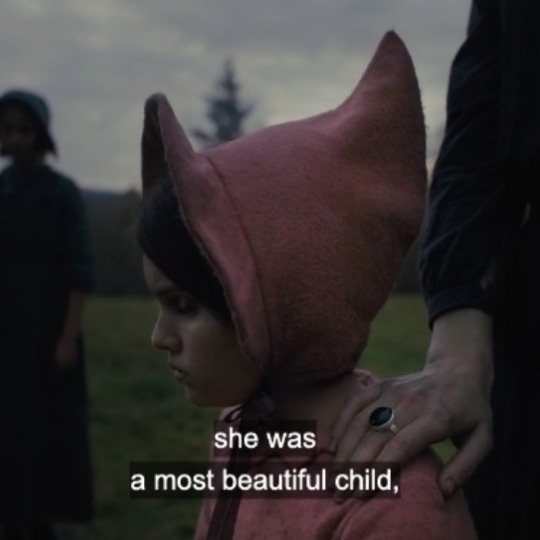


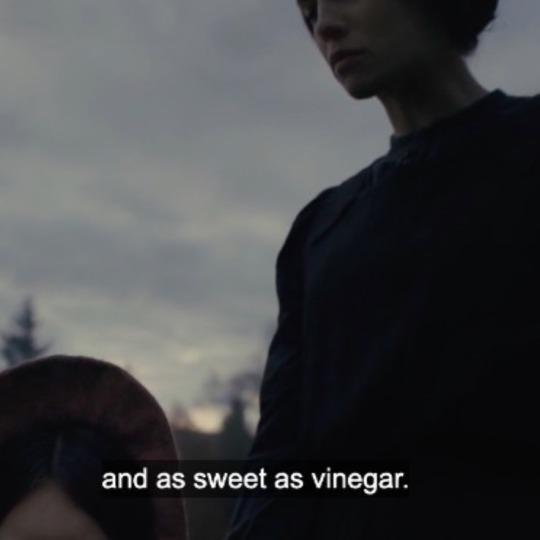


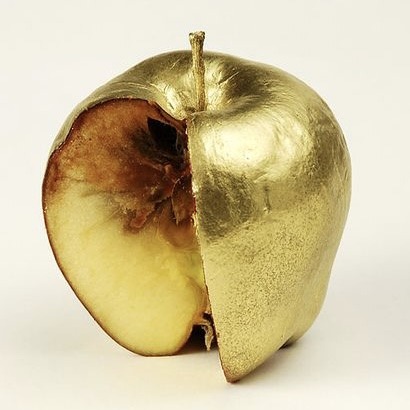

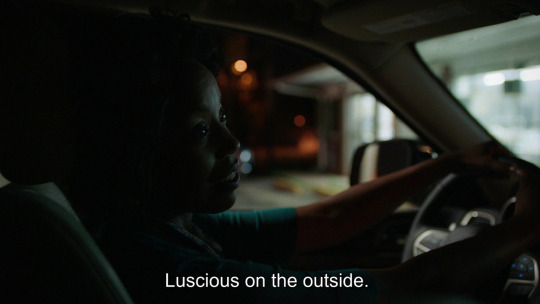


Chronic Illness - Christina Marie Brown / Helter Skelter (2012) / The Secret Diary of Laura Palmer / Gretel & Hansel (2020) / Pernille Augustson / Spit It Out - Softcult / Sharp Objects / All Eyes On You - Katy McAllister
#helter skelter#laura palmer#twin peaks#david lynch#gretel and hansel#sharp objects#gillian flynn#amy adams#camille preaker#brothers grimm#the brothers grimm#parallels#rotten#horror#hansel and gretel#gretel & hansel#hansel & gretel#literature#softcult#spit it out
986 notes
·
View notes
Text
King Magnifico Backstory : Part One
Ok! Here goes part one for my ideas for Magnifico’s backstory with the DisneyVerse! I based it on the fairytale “The Carnation/ The Pink” as recorded by the Brothers Grimm, the tale of a young man who’s every wish comes true…
Link to the fairytale I’ve based this on here

Once upon a time, a lonely, childless queen wished upon a star, and the star answered. The Fairy of the star said that for the Queen’s great kindness and pure heart, the child would be blessed with beauty, charm and that he would have the power to grant the wishes of his people, in order to bless the kingdom he would one day inherit.
(This is me justifying that “Mirrors love my face/got these genes from outer space” line xD)
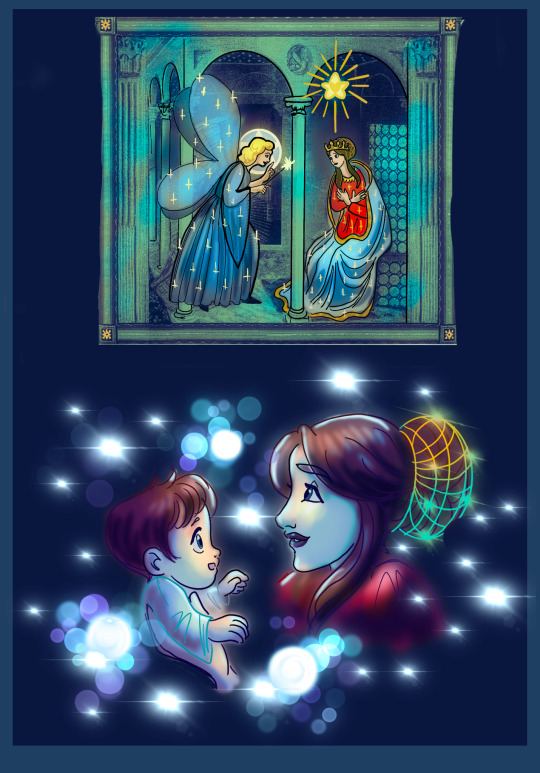
The queen was overjoyed with her son, and marveled at the magic he already displayed. She intended to keep his gift secret from the kingdom until he was older, in order to protect him, but it was too late. Word of his gift had leaked out, and one day the child was kidnapped.
He grew up under the watchful eye of his “parents”, granting them whatever they desired, wish after wish, day after day. Gowns and jewels, a manor house on the kingdom’s border, a fleet of fine hunting hounds to tear up the countryside. A covering of protection from any who might try and discover their whereabouts.
The child gave it all to them, for he felt the power of Love inside him when he used the gift that was meant to bless, and thought the love came from them.
They told him to never be selfish and wish for himself, though this was only to keep him from one day wishing in anyway that might undermine them. They lived in luxury and he in loneliness, for they of course allowed none to get to close to their prize lest another steal their good fortune.

Finally though, when the boy had become a youth, his loneliness became too great, and he wished deep in his heart for companionship. And the wish was granted. A beautiful young woman stood before him, shocked to be suddenly in a strange place before a strange man. But the youth was so comely, and spoke to her kindly and with assurances she would be safe with him, that soon she lost her fear. She still wished to return home, but the youth persuaded her to remain with him a while longer.
(He’s not evil yet obviously, but he’s always been a smooth guy and now he’s got a taste of having something he wants he’s loath to let it go. Which is understandable but can and will of course turn darker…)
For a time the youth hide the girl within the hallow of the pink rose bush in the center of the garden, and their loved bloomed with the roses they both found sanctuary in.

But eventually they were discovered by the youth’s “Father”. The boy confessed he had wished for a companion, and the man feigned acceptance. He asked the girl her name and origin, and she told him she was called Amaya, and that she hailed from the Kingdom of Córdoba. Upon further questioning, the man realized his stolen ‘son’s wish had pulled a woman to him from a completely different world.
Realizing the youth’s power would soon grow out of any control they could exact over him, the man and his wife determined to cut their losses and finally do away with him, lest their treachery be uncovered. Unbeknownst to them, the youth had overheard their plot, and began to plot his vengeance against the people he had believed to have been his parents.
Meanwhile, the leacherous man had taken a fancy to the girl, Amaya. He told her that if she aided him in getting rid of the youth he would aide her in returning back to her own world. Amaya had no interest in either the foul man nor in betraying the youth she had come to love, but she knew if she did not do as the man asked both she and her lover would be killed. So she took the heart of one of the man’s beloved hounds and brought it to him, claiming it to be the heart of the youth.
She rejected the man’s advances though, refusing him vehemently and reminding him their bargain was for him to help her to return home. Pretending to accept her rejection, the man waited until night to steal into her rooms within the manor, with a dagger drawn to plunge into the sleeping girl.
But he was met with the livid face of his erstwhile ‘son’ instead.

“So, ‘Father’, at last you show your true face. Your heart is a coal of envy, your wishes are cruel and selfish, you would take and kill with no more thought then your beloved hunting dogs do. So I wish that your outward self might reflect the beast within you!”
And with those words, the man’s bones shook and snapped, his hair darkened and spread, and soon enough a great beast spawns tearing around the manner, fire pouring from its insides as it burned all the ill gotten gains in the manor, and itself along with it.

The youth attempted to return to his true mother, but tragedy has struck while he grew up ignorant of his heritage. The King, furious that the son he had waited so long for had been stolen, blamed the Queen for the tragedy, and locked her within a doorless tower. A bird came twice a day to bring her food, but her heart was broken, and she eventually wasted away. The people, who had loved the kind queen, rose up against the cruel king, and the kingdom was left broken and destroyed.
The youth had no wish to stay in this place, full of the memories of all the good that had been destroyed by two greedy thieves. The youth, a man now, innocence scorched from him, kept a part of the banner that once hung in the grand hall to remind himself the folly of granting the wishes of the undeserving
He was ready however to grant the wish of the one who had not betrayed him, his beloved Amaya. Her wish brought them a ship that would carry them across the waves of sea and space, and together they sailed off into another world…
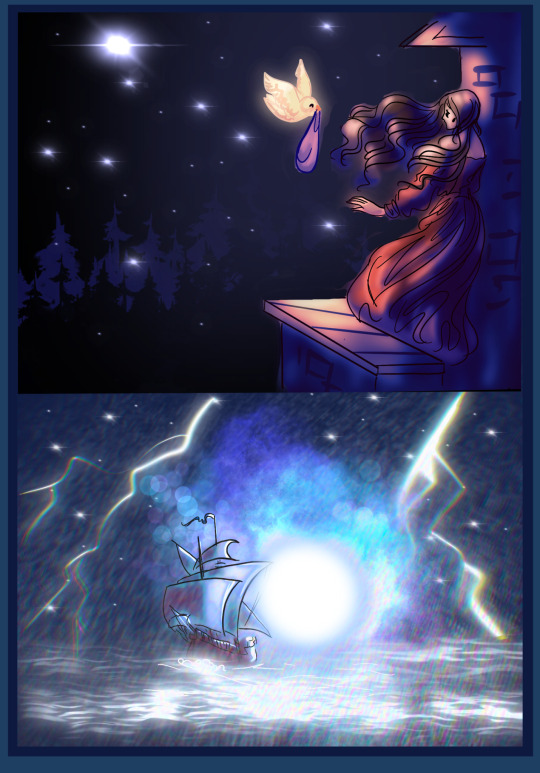
Edit: Part 2
#my art#disneyverse#disney#wish 2023#disney wish#king magnifico#queen amaya#amaya x magnifico#the pink fairytale#the carnation fairytale#the brothers grimm#villain backstory#disney villains#the blue fairy#who was very young when this all happened#and meant well but it didn’t go so well :/#cw body horror#cw death#wish movie#wishing star#disney fanart#disney fanfiction#wish fanart#wish fanfic
172 notes
·
View notes
Text
Books That Are Fairytale Retellings

The Sleeper and The Spindle by Neil Gaiman
A Court Of Thorns and Roses by Sarah J. Maal
Cinderella Is Dead by Kalynn Bayron
The Girl In Red by Christina Henry
Once Upon A Time: A Story Collection by Shannon Hale
Lost In The Never Woods by Aiden Thomas
The True Story Of Hansel and Gretel by Louise Murphy
Cinder by Marissa Meyer
The Big Over Easy by Jasper Fforde
The Mermaid by Christina Henry
House Of Salt and Sorrows by Erin A. Craig
Girls Made Of Snow And Glass by Melissa Bashardoust
The Storybook of Legends by Shannon Hale
The Wishing Spell by Chris Colfer
Forest Of A Thousand Lanterns by Julie C. Dao
Geekerella by Ashley Poston
The Fourth Bear by Jasper Fforde
Gingerbread by Helen Oyeyemi
To Kill A Kingdom by Alexandra Christo
Six Crimson Cranes by Elizabeth Lim
Once Upon A Broken Heart by Stephanie Garber
#fairytale#fairytale retelling#the brothers grimm#ever after high#books#book blog#booklr#readblr#book reccs#book recommendations#bookaddict#book list#fairytale book list#fairytale books#hans christian andersen#the little mermaid#little red riding hood#nursery crimes#beauty and the beast#hansel and gretel#cinderella#snow white#bookworm#books and reading
287 notes
·
View notes
Text
Given I have made two posts already about "Hansel and Gretel", or variations of the story, I'll make this fairytale the Grimm fairytale of this season. And since everybody knows Hansel and Gretel, and I already spoke somehow about it, I'll just leave below several notes, trivia and facts.

I have spoken before about the "original" version of the Brothers Grimm fairytale - aka the first edition of the text, and how it changed and evolved up to the story we know today. Many of these changes are well-known by the public - for example how the wicked stepmother was originally a wicked MOTHER (but the Grimm changed it because they had a mother-worship thing going on) ; or how the whole "duck scene" where the kids are helped crossing the river by birds was added later and not present in the original text. Some are less known, such as the fact that the "heavenly wind" rhyme was not part of the original text, or how Hansel's prison was originally not some sort of stable like in the final text but a tiny hicken coop.
In terms of "sibling stories" when we look at the great patches of historical fairytales and older literary works, you will find a lot of people pointing out to the Italian fairytale "Ninnillo and Nennella" by Basile - but I have to strongly disagree with this claim, because while Basile's fairytale does contain the motif of "boy/girl sblings abandoned several times in the woods, using various objects to find their way back, until it fails and they are lost forever", beyond that the fairytale has little to no relationship with Hansel and Gretel. A more direct ancestry and relationship has to be found in the French fairytale. More precisely in Perrault's Little Thumbling, Le Petit Poucet, which is also a story about children abandoned in the woods due to a lack of food, that found their way back several times before the birds eat the bread, and that end up in the house of a man-eater, an ogre trying to kill them. But we are still quite away from the German tale - and it is another French literary fairytale that forms the "missing link" in this chain. Madame d'Aulnoy's "Cunning Cinders" (Finette Cendron). This story doesn't involve children, but four young women - however it still follows the Hansel and Gretel formula very closely. Abandoned by their parents in the wilderness, manage to get back several times before it fails, end up trapped in the house of man-eaters, and the titular character defeats the ogre by pushing hm into a fiery oven... Of course, beyond that d'Aulnoy has a ton of additional content - such as the ogre having a wife that must be beheaded ; the lost girls being helped by a fairy godmother ; and the second part of the story being an alternate Cinderella.
But all in all it shows a point I made previously, and talked about in my ogre posts: the structure and type of the "Hansel and Gretel" story is originally an ogre tale. All older versions of the story involve ogres, not witches - but since the German do not have "ogres" in their folklore, the ogress was replaced by a witch. And despite this replacement, the witch of the story keeps several ogre traits - such as a motif of "the elderly devours youth", the idea of the witch having a poor eyesight but a keen sense of smell, or the entire "maternal perversion" motif. Which is my next point.
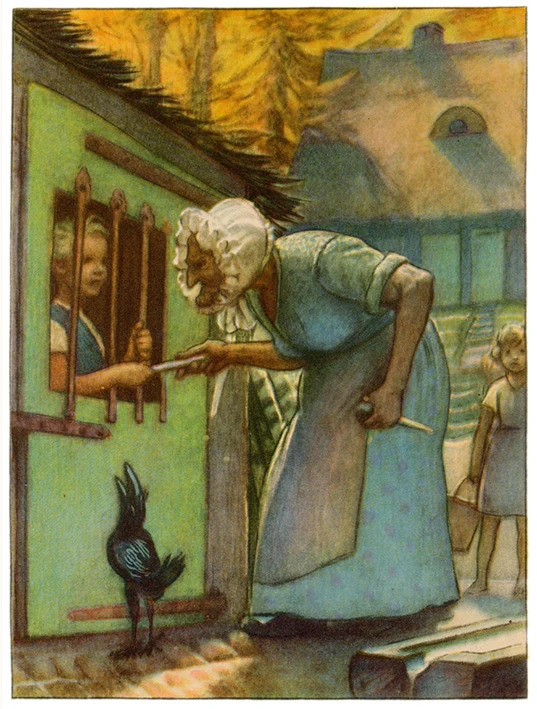
"Hansel and Gretel" is a familial tragedy, like many other fairytales. But the family of Hansel and Gretel is an actually extremely bizarre one. You can see, once you know your folklore and fairytale lore, that despite it being considered a "classic" and a "foundation", this tale is actually a fragmented and pieced-together story that leaves numerous gaps and is much more muddled and confused than its equivalents and predecessors. What I mean by that is that, when you look at the familial relationships in this story, you will discover several remnants of an older and more commonspread familial structure that was erased, and only leaves bizarre analogies in the new set of characters the tale offers.
To be clearer. We know that Hansel and Gretel are siblings, and that they have two parents - the father and the stepmother, formerly mother. The witch is an unrelated character acting as an outside element - or so it seems. The fairytale actually establishes a parallel and a connection between the wicked stepmother and the witch. They are parallel characters, two wicked women that want the death of children, but whereas one wants to throw the kids out of the house to leave them to starve or be devoured by beats, so she can have more food herself, the other imprisons the children in her house and overfeeds them to devour them later. A more direct link is established whenn the children return home, at the end of the tale, and discover that their step-mother is dead.
Some dark and edgy adaptations will have things such as the stepmother being killed by her husband, or killing herself, stuff like that - but by the tale alone, on just reading the words, and the first impression it leaves on a child, is that the stepmother mysteriously dies in unexplained ways right after the children burned the witch in her oven. The fact that the two wicked women end up deceased for the tale to end happily, the fact the stepmother's death is left unexplained while the witch's death is graphic and fully presented, the fact the stepmother's death is announced after the witch was killed... It all leaves the impression that the two were connected, and that by some sort of "parallel magic", killing the witch triggered the stepmother's death.
This is something many adaptations picked up upon, and you find versons where the witch and the mother look a lot alike, or are played by the same person, or are the same being. (One can compare it to Russian variations of the stories of Baba-Yaga, where wicked stepmothers sometimes send their nice stepdaughters a la Vasilisa the Fair, to the Yaga's house claiming the Yaga is their "sister"). All in all this continues the idea that the witch is a perverse take on the mother figure - nourishing and protecting children only to gulp them down into her stomach. Which, by the way, is the very symbolism and essence of ogres: fathers that kill, mothers that eat.

But while this is the most famous of the "perverse family connections" in the tale, there is another people tend to forget: the connection between Gretel and the witch. I talked heavily of the difference of treatment the witch has between Hansel and Gretel in a previous post ("Why was Hansel the meal of the witch?"). People have noted the strange discrepancy of Hansel being the one locked up and fattened up to be eaten, while Gretel became an abused slave. Many modern adaptations played on this element by having the witch planning on not eating Gretel, but making her an apprentice in witchcraft, an heir to her house, and treating her like a daughter/witch in training. After all, she does malnourish her, so she seems not keen on the idea of eating her at first...
But these modern adaptations actually picked up on something deeper and more fascinating. You see, the witch not locking up Gretel and treating her as her slave seems to be a leftover from older variants of the tale, because there is a widespread archetype in fairytales known as "the witch's daughter" or "the ogress' daughter". In many ogress or man-eating witches tales, the antagonist has a daughter that assists her in her chores. Sometimes the daughter will secretely help the protagonist escape and be an ally - but these are quite rare, and most of the time the daughter is the one the witch/ogress charges of killing-cooking the protagonist. Then the protagonist tricks the daughter, kills and cooks her instead of themselves, and serve her to their monstrous mother, who believes she is eating the protagonist, when in fact she devours her own daughter. It is a very typical structure in those tales, found from the Baba Yaga legends to the Kabyle tales of the teryel.
The witch's daughter archetype also exists in fairytales where the witch is not a man-eater, but rather an antagonist that imprisons people, or that imposes impossible tasks - and here, the daughter will be a more benevolent figure that will secretly help the protagonist escape the witch and/or overcome the trials and tasks the mother imposes. In fact, in several of those stories, the protagonist fights for the right to love and marry the witch's daughter.
All in all, the fact that Gretel is treated as a slave and assistant to the witch, that she is to help feeding and fattening her brother, etc, etc, implies that her character in the story of the Grimm is a leftover of the "ogress' daughter" or "witch's daughter" of older stories. As a result it makes even more sense for adaptations to have the witch treat Gretel as some sort of surrogate daughter, and it makes the whole family picture of the German story very messed up. The witch who tries to eat the children might be their mother/step-mother, and Gretel might be the witch's daughter.

Another motif that has been picked up by various adaptatons is the motif of birds. I remember long ago I stumbled upon a fascinating art series depicting the witch as a half-bird half-human creature - unfortunately the pictures are now lost in the vast pit of the Internet. More recently, another artist posted an image of Hansel in his cage, with the witch appearing a large, black bird above the cage, wearing a witch's hat.
All those art pieces reflected a true fact: "Hansel and Gretel" is a bird story. You have the birds that devour the bread crumbs, but also the pretty bird that leads the children to the witch's house, and the ducks that helps them cross the stream in the added ending of the Grimm. Some variations also have Hansel claim, when he keeps looking back at the house, that he is seeing a "pretty bird" instead of a "pretty cat" like in the Grimm's final text. As a result, some people did identify the birds that eat the breadcrumbs and/or the bird that leads the children to the house with the witch. The anime "Grimm's Fairy Tale Classics" notably depicted the pretty bird luring the children to the house as the witch's familiar.
A last note: The idea that the witch's house is made of tons of various candies and sweets was popularized by various modern adaptations and retellings of the story. In the Grimm tale, the house isn't made of candy. It isn't even made of gingerbread as so many people believe! While it is common for people to think of this tale as "the one with the gingerbread house", I don't know where that comes from. In the text of the Grimm, the house is merely made of bread, plain old bread, with sugar for the windows. There are however cakes that are said to cover the house, as ornaments. Maybe people in retellings decided to mix together the "cake"and the "bread" and decided to make it "gingerbread"? I don't know.
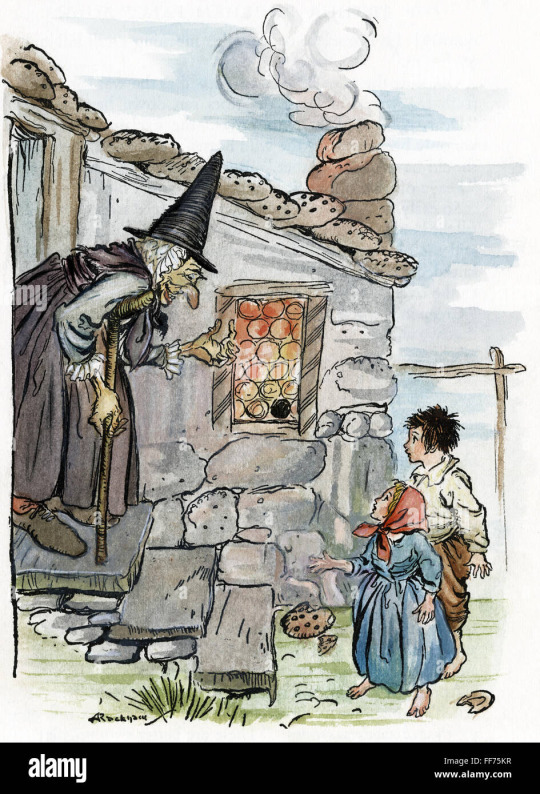
#hansel and gretel#fairytale analysis#gretel#fairytale witch#the gingerbread house witch#grimm fairytales#german fairytales#the brothers grimm#hansel#birds in fairytales
270 notes
·
View notes
Text
Hollywood needs to bring this genre back.
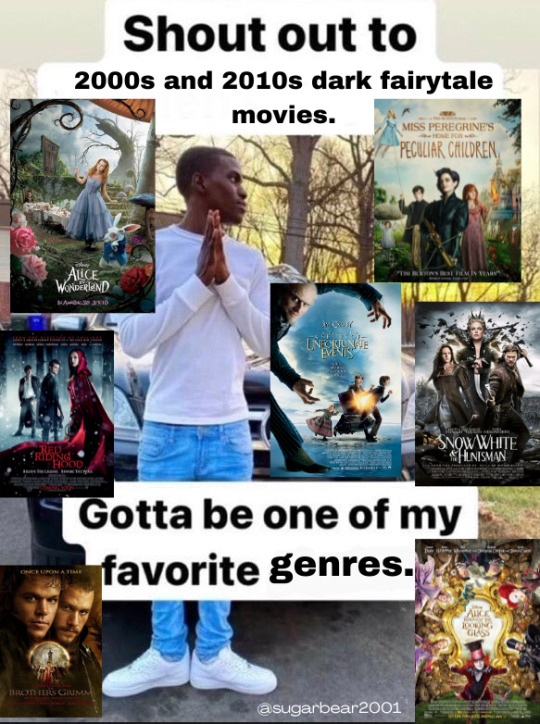
#early 2000s#2010s#nostalgia#alice in wonderland#the brothers grimm#snow white and the huntsman#little red riding hood#miss peregrines home for peculiar children#a series of unfortunate events#2010s nostalgia#movies#memes#film#y2k#2000s
65 notes
·
View notes
Text

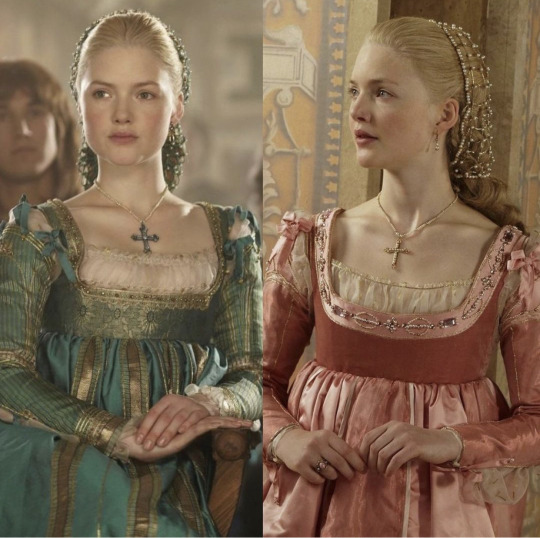


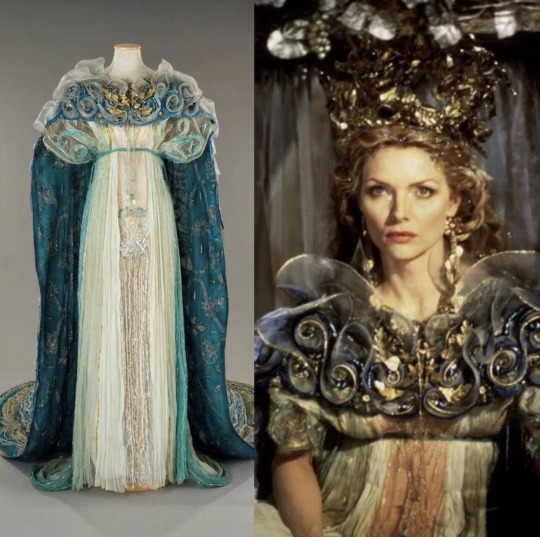

In honour of costume designer Gabriella Pescucci who turns eighty. Born on this day in Rosignano Solvay, Tuscany, Italy.
Eva Green, Penny Dreadful (2014-16)
Holliday Grainger, The Borgias (2011-13)
Winona Ryder and Michelle Pfeiffer, The Age of Innocence (1993)
Michelle Pfeiffer, A Midsummer Night's Dream (1999)
Monica Belluci, The Brothers Grimm (2005)
Images and text courtesy of The Corseted Beauty on instagram
#gabriella pescucci#eva green#winona ryder#michelle pfeiffer#penny dreadful#the age of innocence#the brothers grimm#a midsummer night's dream#splendid film costumes#amazing talent#the corseted beauty#the borgias#holliday grainger#monica bellucci
558 notes
·
View notes
Text
In Heidi Ann Heiner's Cinderella Tales From Around The World, I've now read the variants from Germany, Belgium, and France.
*Of course the most famous German Cinderella story is Aschenputtel by the Brothers Grimm. If you don't know it from reading it, you probably know it from Into the Woods, and if you don't know it from there, you've probably heard of it in pop culture. Too many people mistakenly think it's the "original" version of Cinderella. But there are other German Cinderella stories too – all similar to the Grimms' version, but with differences here and there.
*In nearly every German version, and in both of the two Belgian versions the book features, the heroine gets her elegant gowns and shoes from a tree. It throws them down to her, or opens up to reveal them, after she either recites a rhyme underneath it or knocks on it.
**Some variants, like the Grimms', have the archetypal "father goes on a journey and asks for gift requests" plot line, and the heroine gets a hazel twig, which she plants on her mother's grave and which grows into a tree. But in other versions, the tree is seemingly a random one, which either a dove, a dwarf, or a mysterious old man or woman advises her to ask for finery.
**That said, there's one exception: a German version called Aschengrittel, where the heroine meets a dwarf who, like the fairies in some Italian versions, gives her a magic wand to grant her wishes.
*As in the Egyptian, Greek, and Italian versions, it varies whether the German versions have the heroine abused by a stepmother and stepsister(s) or by her own mother and sister(s), whether her father is alive or not, and whether the special event she attends is a royal ball/festival or a church service. In both of the two Belgian versions, the heroine's abusers are her own mother and sister(s).
*While in the Mediterranean versions, the heroine's future husband is always either a prince or (more rarely) a king, in the German versions he's occasionally a knight or a rich merchant instead.
*Other typical German and Belgian details are (a) the (step)mother forcing the heroine to sort lentils, seeds, or grain, usually by picking them out of the ashes, which is usually resolved by birds doing the job for her, (b) the prince (or king, or merchant) having the palace or church steps smeared with pitch so that the heroine loses her shoe, and (c) the notorious detail of the (step)sisters cutting off parts of their feet to make the shoe fit, which is revealed when either birds or a dog call out that there's blood in the shoe.
**One Greek version has the prince catch the heroine's shoe by having the church steps smeared with honey, but the Mediterranean Cinderellas usually lose their shoes either by accident or by choice, while in Germany and Belgium it's usually the prince's doing.
**The foot-cutting episode is clearly typical of German and Belgian versions, but the Grimms' other notorious detail, where the stepsisters' eyes are pecked out by doves at the end, isn't typical. The Grimms themselves added that grisly detail to give the story a more "moral" ending with the stepsisters appropriately punished.
*The Grimms' footnotes for their version are included in this book. They mention several other German variants, including two that continue after the heroine's marriage and have the stepmother and stepsister try to murder her, and one where the stepmother starts out as the heroine's childhood nurse and murders the girl's mother by pushing her out a window, then claims she committed suicide.
*The German, Belgian, and French Cinderellas aren't quite so cunning and unfazed as the Greek and Italian Cinderellas. Now we see more heroines who cry over their hardships, and/or who beg to be allowed to go to the ball/festival or church, and whose magical help is more given to them and less in their own control. One notable French exception to this pattern, though, is Madame d'Aulnoy's cunning and self-reliant Finette Cendron.
*France doesn't seem to have the same pattern of culturally-distinct oral versions of this tale that other countries do. Instead, the French examples in this book are nearly all literary versions, and each one is almost completely different from the others.
**Of course the most wildly famous and important French Cinderella is Charles Perrault's Cendrillon. This is the Cinderella we all know best, with the fairy godmother, the pumpkin coach, the magic only lasting until midnight, and the glass slipper.
**Published in the same year as Perrault's version was Madame d'Aulnoy's Finette Cendron. This is an interesting, much longer variation that starts out as a Hop o'My Thumb/Hansel and Gretel story, where three sisters are abandoned in the woods and nearly eaten by an ogre, only for the clever youngest, Finette, to outwit him, but then turns into a Cinderella story when the older sisters abuse Finette after they make the dead ogre's castle their home, but Finette follows them to a ball in finery she finds in a chest.
**Another French literary variant is The Black Cat, which starts out as a Cinderella tale, but then has the heroine be stranded on an island and give birth to a black cat son (long story), then turns into a Puss in Boots tale as the cat helps his mother. Yet another is The Blue Bull, where the heroine runs away from her stepmother with her only friend, a magical bull, only for the bull to be killed protecting her from lions, and which then becomes a Donkeyskin/All Kinds of Fur-type of story, where she becomes a servant at the prince's palace and gets her ballroom finery from the bull's grave.
*Perrault and d'Aulnoy's versions are the only two Cinderellas so far where the heroine has a fairy godmother. Yes, in some others there are fairies or mysterious old women who help her, but the concept of a fairy godmother seems to have French literary origins.
*These same two versions, Perrault's and d'Aulnoys are also where we first see strong emphasis on the heroine's virtue and kindness, even to her cruel (step)family. While some oral versions do have her forgive them in the end, these literary versions not only have her do that, but have her constantly be gracious and kind to them (Perrault) or save their lives even at great personal sacrifice (d'Aulnoy).
*Now that I've read Finette Cendron, I can see its slight influence on Massanet's opera Cendrillon. In Finette Cendron, instead of Perrault's choice to have the slipper taken from house to house, all the ladies are invited to the palace to try it on, and Finette's fairy godmother sends her a horse to ride there – just like Cinderella's fairy godmother transports her to the slipper-fitting at the palace in the opera. Finette Cendron's Prince Cherí also falls deathly ill with love for the mystery girl, but is cured when he finds her. (A recurring theme in many different variants, which I forgot to mention when I covered the Mediterranean versions.) In the opera, this has its parallel when Prince Charming faints in despair over the seeming failure of the slipper-fitting, and before that when Cinderella herself becomes gravely ill because she thinks she'll never see her prince again.
@adarkrainbow, @ariel-seagull-wings, @themousefromfantasyland
#cinderella#fairy tale#variations#germany#belgium#france#the brothers grimm#charles perrault#madame d'aulnoy#cinderella tales from around the world#heidi ann heiner#tw: violence#tw: murder#tw: suicide mention
60 notes
·
View notes
Text

Prince Grenouille d’après le conte des Frères Grimm Le Roi Grenouille
Éditions Les Livres du Dragon d’Or
1991
Artist : Alix Berenzy
#alix berenzy#american artist#american illustrator#1991#the brothers grimm#brothers grimm#frères grimm#frog prince#frog king#frog#children's literature#fairy tale#children's books#fairy story#prince grenouille#roi grenouille#grenouille
330 notes
·
View notes
Text
does anyone else remember the movie where matt damon was supposed to be the designated hot one so they gave him long hair and made heath ledger cut his / wear glasses. jokes on them bc it didn’t work


#the brothers Grimm#if you want Matt damon to be the hot one don’t cast heath ledger as his opposite#it’s impossible to make heath unattractive#heath ledger
147 notes
·
View notes
Text
Beauty and the Beast retelling where Belle is a vampire and Beast is a recently turned werewolf.
He transforms every night no matter the moon phase, but is human presenting in the day.
Much of the story is him trying to bring out the main qualities he has in the day during the night where she can see them. Cuz they actually have so much in common and would mesh so so well but being transformed overwhelms his senses and his body becomes hard to navigate, which makes him uncharacteristically agitated due to frustration
Beauty/Belle is actually drawn to that abrasive-ness at first since humans are automatically charmed by her and thus she’s only experienced pandering and subservience from ppl for centuries, which is torturous when you’re looking for sincerity.
They get to know each other slowly; Beast working through his frustrations and figuring out how to maneuver his were-form, Beauty actually having to work on her socials skills and how to communicate with someone not hypnotically captivated by her vampiric lure.
Together, they find something patient, honest and vulnerable. A love they chose not in spite of the challenges but largely because of them
#beauty and the beast#grimm brothers#not the Disney one really even tho I did say belle#the brothers grimm#fairy tales#fairy tale retelling
131 notes
·
View notes
Text

Anne Anderson (1874-1952), ''Grimms' & Andersen's Fairy Tales'', 1912
Source
#anne anderson#scottish artists#scottish illustrators#the brothers grimm#hans christian andersen#vintage illustration#vintage art#children's books#fairy tales
129 notes
·
View notes
